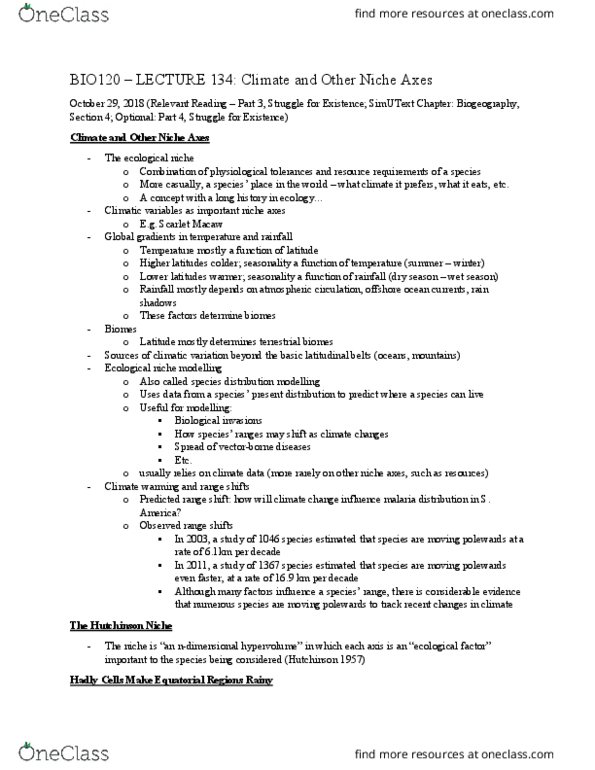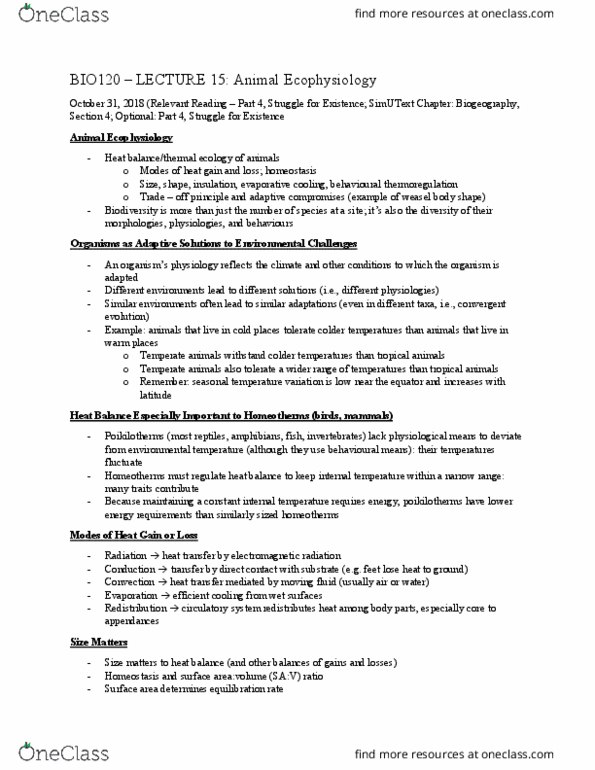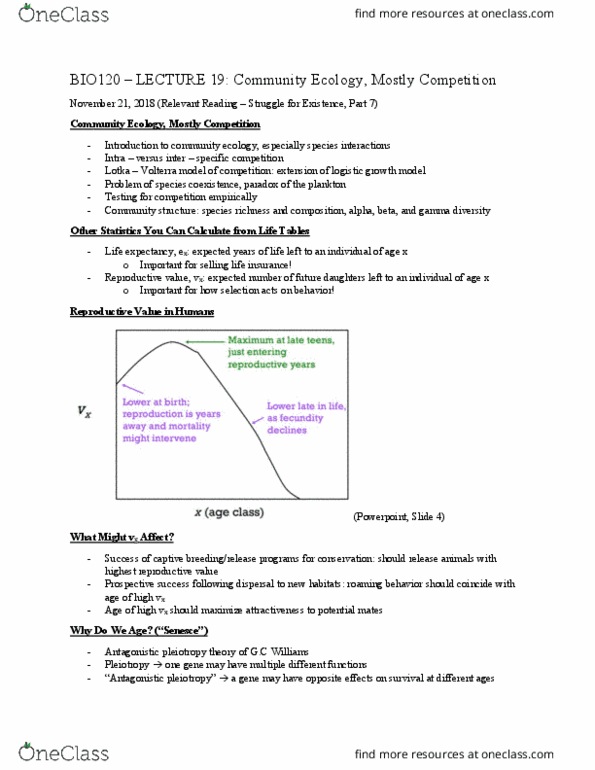BIO120H1 Lecture Notes - Lecture 16: Temperate Climate, Ecophysiology, Evaporative Cooler
BIO120H1 verified notes
16/25View all
Document Summary
October 31, 2018 (relevant reading part 4, struggle for existence; simutext chapter: biogeography, Section 4; optional: part 4, struggle for existence. Heat balance/thermal ecology of animals: modes of heat gain and loss; homeostasis, size, shape, insulation, evaporative cooling, behavioural thermoregulation, trade off principle and adaptive compromises (example of weasel body shape) Biodiversity is more than just the number of species at a site; it"s also the diversity of their morphologies, physiologies, and behaviours. An organism"s physiology reflects the climate and other conditions to which the organism is adapted. Different environments lead to different solutions (i. e. , different physiologies) Similar environments often lead to similar adaptations (even in different taxa, i. e. , convergent evolution) Heat balance especially important to homeotherms (birds, mammals) Poikilotherms (most reptiles, amphibians, fish, invertebrates) lack physiological means to deviate from environmental temperature (although they use behavioural means): their temperatures fluctuate. Homeotherms must regulate heat balance to keep internal temperature within a narrow range: many traits contribute.





